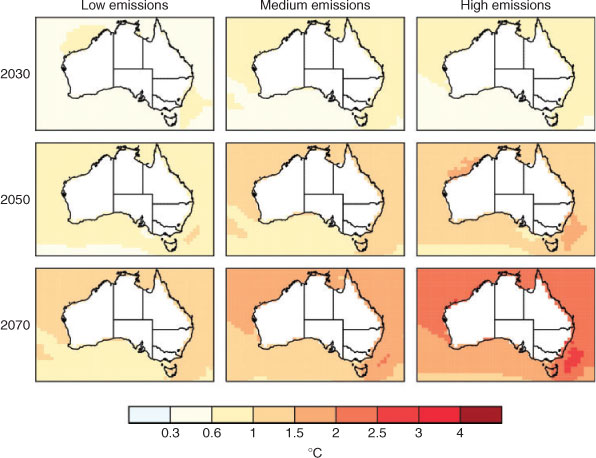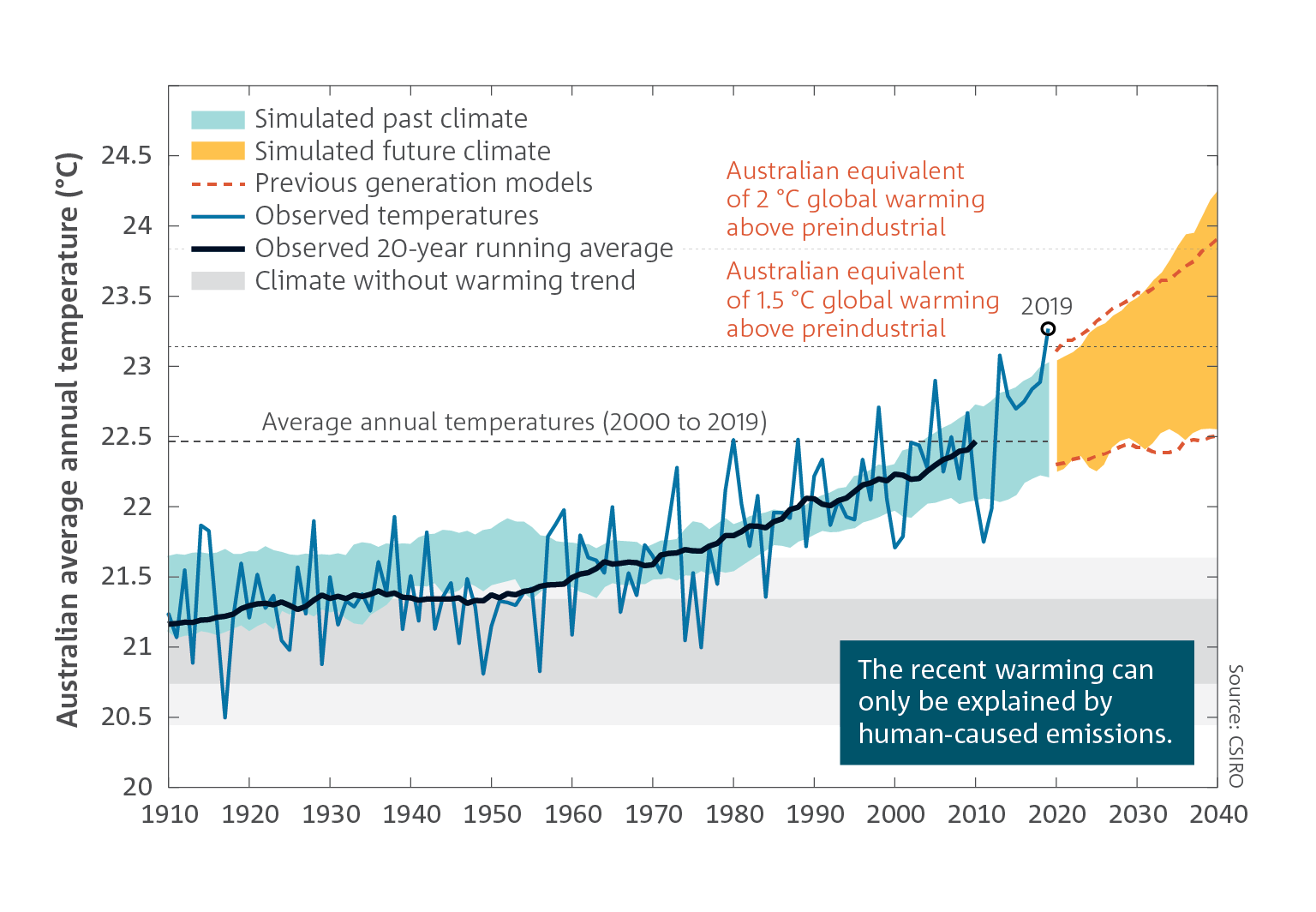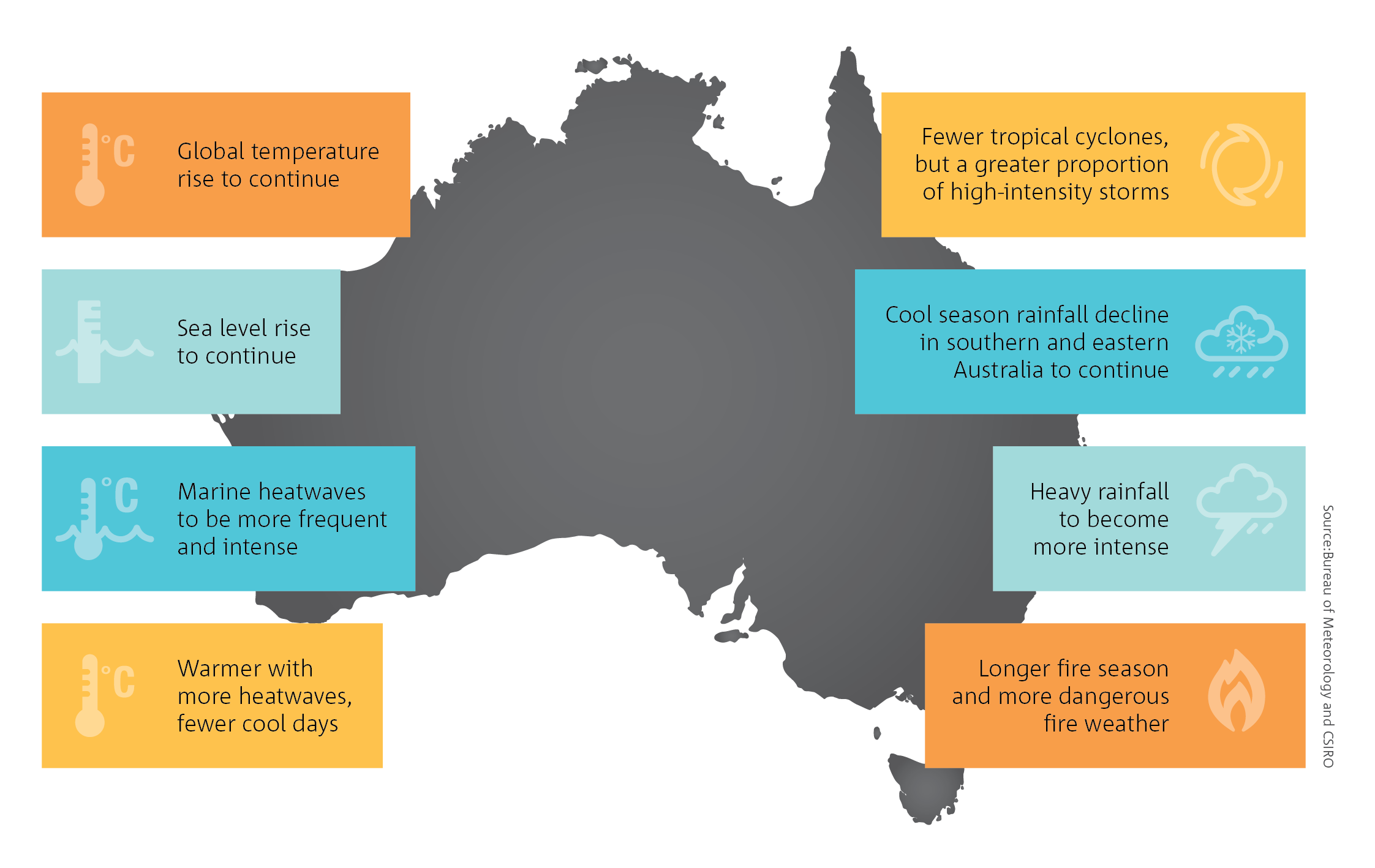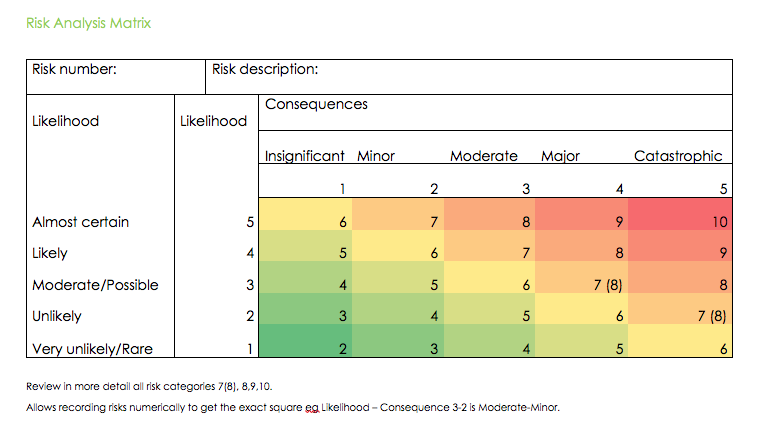Climate Adaptation Planning aims to reduce a development’s vulnerability to a range of climatic changes, natural disasters, and the flow on effects of these. When done well it will increase the resilience of developments or organisations against expected changes in the climate. While Climate Change mitigation should be our primary goal (and represents much of our work at LID), Climate Adaptation Planning is a critical risk management process that should be considered by all developers, investors and organisation heads.
“Thank you for the report, it is very thorough. It has been an interesting process. I think all parties involved learnt from the discussions and I’ve received good feedback. I personally found it very educational and important” – Robin Walker – Project Manager Codicote – re Bourke St Melbourne Development
We interpret CSIRO and BOM climate change projection models for our climate change adaptation plans image source CSIRO
There will be more wild weather in our future, according to the latest State of the Climate update. Source:CSIRO
What does climate change adaptation planning involve?
When undertaking a Climate Adaptation Plan for a new development, LID Consulting will typically:
- Interpret CSIRO and BOM climate change projection models for the site’s region;
- Consider the climate variables that are most likely to impact on the design and operation of the finished development;
- Meet with the project teams to extrapolate potential future impacts of changes to these variables either individually or when variables change in unison;
- Undertake a risk assessment of the potential climate variable change impacts;
- Discuss design or systems solutions to mitigate the higher risk category impacts;
- Ensure implementation of these design or system measures.
Our climate change adaptation planning assessments are based on the industry recognised standard: AS 5334:2013 Climate change adaptation for settlements and infrastructure.
If you would like to find out more about Climate Adaptation Plans, feel free to call us 03 9016 9486 or email info@lidconsulting.com.au.
Climate adaptation planning can be performed for a number of reasons:
To inform schematic design
A climate change risk assessment report can highlight risks critical to a development, allowing for them to be addressed during the early design stages. For example a climate change adaptation plan may show projected increases in rainfall or frequency that needs to be accounted for in your design.
To meet certification goals
Climate change adaptation planning may be a requirement for certification, such as the following new build sustainable rating tools:
- Green Star Design & As Built – Credit 3.0 Adaptation & Resilience compliance.
- EnviroDevelopment – Climate Change Risk Assessment report compliance.
To support policy makers and organisation heads
Climate change adaptation planning can provide councils, policy makers or organisation heads with an insight into likely climate projections relevant to a specific region within Australia and thus identify critical climate change risks. This allows for the development of a strategy or framework to manage these risks which can then be incorporated into initiatives or policy.
To meet governance requirements
The Australian Prudential Regulation Authority (APRA) identifies that climate change is a foreseeable financial risk. Addressing climate change risk is now confirmed as part of Directors duties.
To increase the marketability of a development
The incorporation of climate change adaptation planning allows developments to market to potential buyers & tenants that the development addresses climate change impacts through managing critical climate change risks within the projects design and operation.

An example of projected sea-surface temperature change based on the ensemble mean of multiple global climate models. Source: CSIRO
Our climate adaptation plans review the following categories:
- Atmosphere and Land:
- Surface temperatures
- Rainfall
- Wind, Storms, Weather systems
- Solar radiation
- Humidity
- PET (Potential evapotranspiration)
- Soil moisture and run-off
- Fire risk from weather
- Marine and Coast:
- Sea level rise
- Extreme sea levels
- Sea surface temperatures
- Sea surface salinity
- Ocean acidification
If you would like to find out more about Climate Adaptation Plans, feel free to call us 03 9016 9486 or email info@lidconsulting.com.au.







